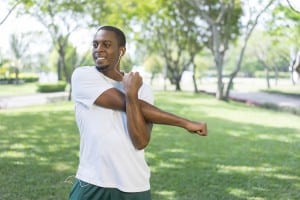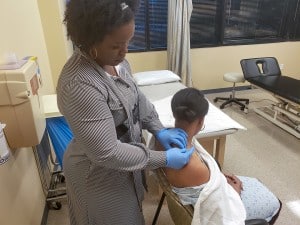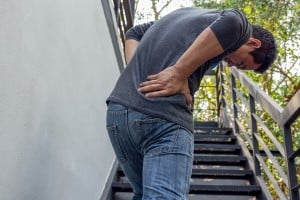Patients don’t always need to turn to medication for relief from common types of pain.

Ambrosia Scott, DPT, LAT, CCI, says therapy can help patients address aches and pains from head-to-toe.
Ambrosia Scott, DPT, LAT, CCI, outpatient rehabilitation manager for Regional One Health, said physical therapy helps in several ways:
- Education and prevention
- Improving strength and flexibility
- Pain relief techniques
“We assess not only the patient’s body, but their environment and habits, and teach them how to make changes to prevent pain and injuries from even occurring,” she said.
A full range of services is available at Regional One Health’s Center for Rehabilitative Medicine.
Help from head-to-toe
Scott said therapy can help with pain from head-to-toe. Conditions therapists address include:
- Chronic headaches/migraines
- Back pain
- TMJ and other pain the jaw area
- Acute pain from an injury
- Chronic pain from a past injury
- Overuse conditions like tendonitis
- Myofascial Pain Syndrome and other soft-tissue disorders
The more you know…
Scott said therapy for pain management focuses on education and prevention.
“That’s huge – education is the key,” she said.
“Patients don’t necessarily know how to protect their muscles and joints. We want to help them understand how certain activities can be harmful, and how to use correct biomechanics instead.”
Therapists explain how inflammation and injuries occur. They address how repetitive motions cause pain. They discuss the importance of nutrition and weight management.
They even educate people about what shoes to wear and how to make their work area safer.
“We can prevent a lot of the things that cause aches and pains,” Scott said. “Therapists can help patients make simple adjustments that make a world of difference.”
Move the right way

Therapists can teach patients stretches and exercises that ease pain by building strength and flexibility.
Therapists also teach patients “therapeutic exercises” that address their pain. These exercises look to improve many areas:
- Strength
- Range of motion
- Flexibility
- Balance
- Functional mobility
- Aerobic capacity
“A lot of times, pain can be countered through strengthening and flexibility,” Scott said. “Doing those exercises on a regular basis helps address pain and prevent it.”
Maintenance is essential. Scott said the Center for Rehabilitative Medicine officers a Post-Rehab Wellness Program. A Certified Personal Trainer helps patients stay strong and healthy.
Pain relief without drugs

Ambrosia Scott performs dry needling on a patient. The technique uses tiny needles to spark the body’s own healing processes.
Therapists also use hands-on techniques to relieve pain.
“The goal is to reduce the pain level to the point where you can tolerate other interventions,” Scott said.
Manual soft tissue therapy and ultrasound are helpful to many patients.
Scott is also certified in Dry Needling. The technique uses tiny needles to stimulate the body’s natural healing processes.
